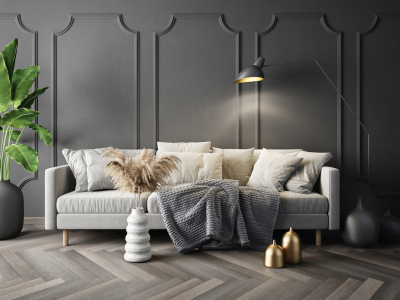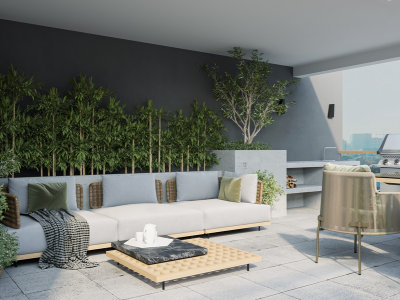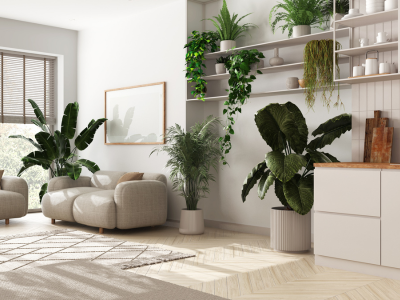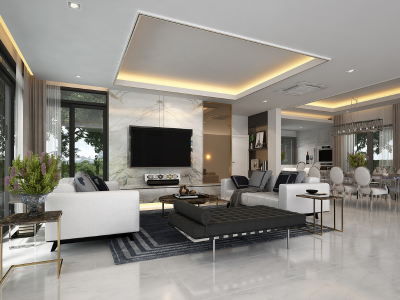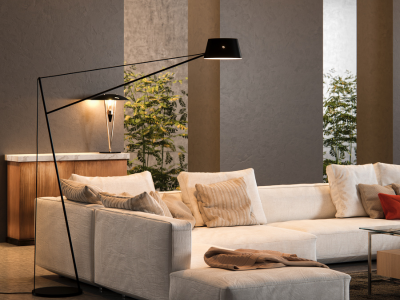
Designing small spaces presents unique challenges, but it also offers opportunities to get creative and think outside the box. Whether you’re working with a studio apartment, a tiny bedroom or a compact kitchen, smart design solutions can help you make the most of every square foot without sacrificing style or comfort.
In this blog, we’ll share practical tips on how to maximize style and functionality in small spaces, turning even the tiniest room into a well-organized and beautiful living area.
1. Multi-Functional Furniture: The Key to Small Space Design
When space is limited, every piece of furniture should serve more than one purpose. Multi-functional furniture, such as sofa beds, extendable dining tables and ottomans with storage is a game-changer for small spaces. These versatile pieces help you save space while providing the functionality you need for daily living.
Look for furniture that can fold away, stack or expand depending on your needs. Wall-mounted desks, murphy beds and modular seating systems are also great options for maximizing small spaces.
Pro Tip: Use furniture with built-in storage to keep clutter at bay and make your space feel more open and organized.
2. Maximize Vertical Space
In small rooms, it’s important to make use of vertical space as much as possible. Tall shelving units, hanging cabinets and wall-mounted storage can help free up floor space while keeping your belongings organized.
Consider installing floating shelves, pegboards for hanging racks in kitchens, bathrooms and living areas to keep frequently used items easily accessible without taking up valuable surface space.
Pro Tip: Use tall bookshelves or cabinets that reach the ceiling to create additional storage and draw the eye upward, making the room feel larger.
3. Light and Bright Color Palettes
Light colors can make small spaces feel more open and airy. Opt for neutral tones like white, beige or soft pastels for walls and larger furniture pieces, as they reflect light and create a sense of spaciousness. To avoid a monochromatic look, add pops of color through decor items like throw pillows, artwork or rugs.
Mirrors are another excellent tool for small spaces. Placing mirrors opposite windows helps reflect natural light and create the illusion of depth, making the room appear larger than it is.
Pro Tip: Glossy or satin finishes on walls and furniture can enhance light reflection, making the space feel brighter.
4. Declutter and Organize
Clutter can quickly make small spaces feel cramped and overwhelming. To keep your space functional and stylish, focus on decluttering and keeping only the essentials. Invest in smart storage solutions, such as under-bed storage boxes, hanging organizers or baskets, to maintain a tidy and organized space.
Minimalism works well in small spaces, as it allows the room to feel more open and less crowded. Choose a few key pieces of furniture or decor items that make a statement and avoid overcrowding the space with too many items.
Pro Tip: Regularly assess your belongings and donate or store items you no longer use to keep clutter in check.
5. Clever Use of Lighting
Proper lighting can transform a small room and make it feel more inviting. Layer different types of lighting, such as overhead lights, task lights and accent lights, to add depth and warmth to the space. Recessed lighting or wall sconces are excellent options for small rooms, as they don’t take up any floor space.
Floor and table lamps can add ambiance while serving as decorative elements. Just be sure to choose fixtures that complement the overall style of your space and don’t overwhelm it.
Pro Tip: Use LED strip lights under cabinets or along shelves to create a soft, indirect glow that adds depth and warmth to small spaces.
Conclusion:
Designing small spaces requires creativity and careful planning, but with the right strategies, you can maximize both style and functionality. By choosing multi-functional furniture, optimizing vertical space and using light colors and smart lighting, you can transform even the smallest room into a comfortable and beautiful living area.
Whether you’re working with a tiny apartment or a small room in your home, these tips will help you make the most of your space without compromising on style or comfort.


